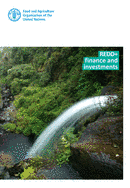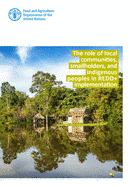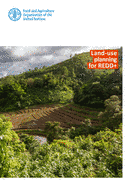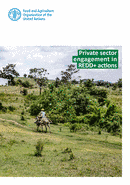Publications
Throughout the last decade, countries have made significant progress in the readiness phase of REDD+, including on forest monitoring, forest reference levels, REDD+ safeguards and governance. Many countries are now ready to start implementing REDD+ by putting in practice mitigation actions defined in their REDD+ strategies and action plans, as...
To implement the ambitious REDD+ actions required to halve deforestation and forest degradation, developing countries need to adopt innovative and ambitious financing approaches. Financing to shift land-based investments and achieve deforestation-free commodity production is estimated at USD 200 billion, of which approximately USD 17-28 billion is needed for REDD+, an...
Local communities, smallholders and indigenous peoples play an essential role in the sustainable management of land and forests and, as such, in mitigating and adapting to climate change. They are the guardians of approximately one-third of the world’s forests and have customary rights over a large proportion of forest lands...
Land-use planning is increasingly being recognized as a central part of the formulation and implementation of strategies to reduce deforestation and forest degradation, contributing to both climate change mitigation and adaptation. Conflicting interests and competition over land and resources have been major driving forces of forest conversion, with increasing pressure...
Given its ability to innovate, rapidly adapt to changing conditions and leverage capital for new market opportunities, the private sector can play a key role in helping countries meet the Sustainable Development Goals and their climate commitments, such as Nationally Determined Contributions (NDCs) and REDD+.





